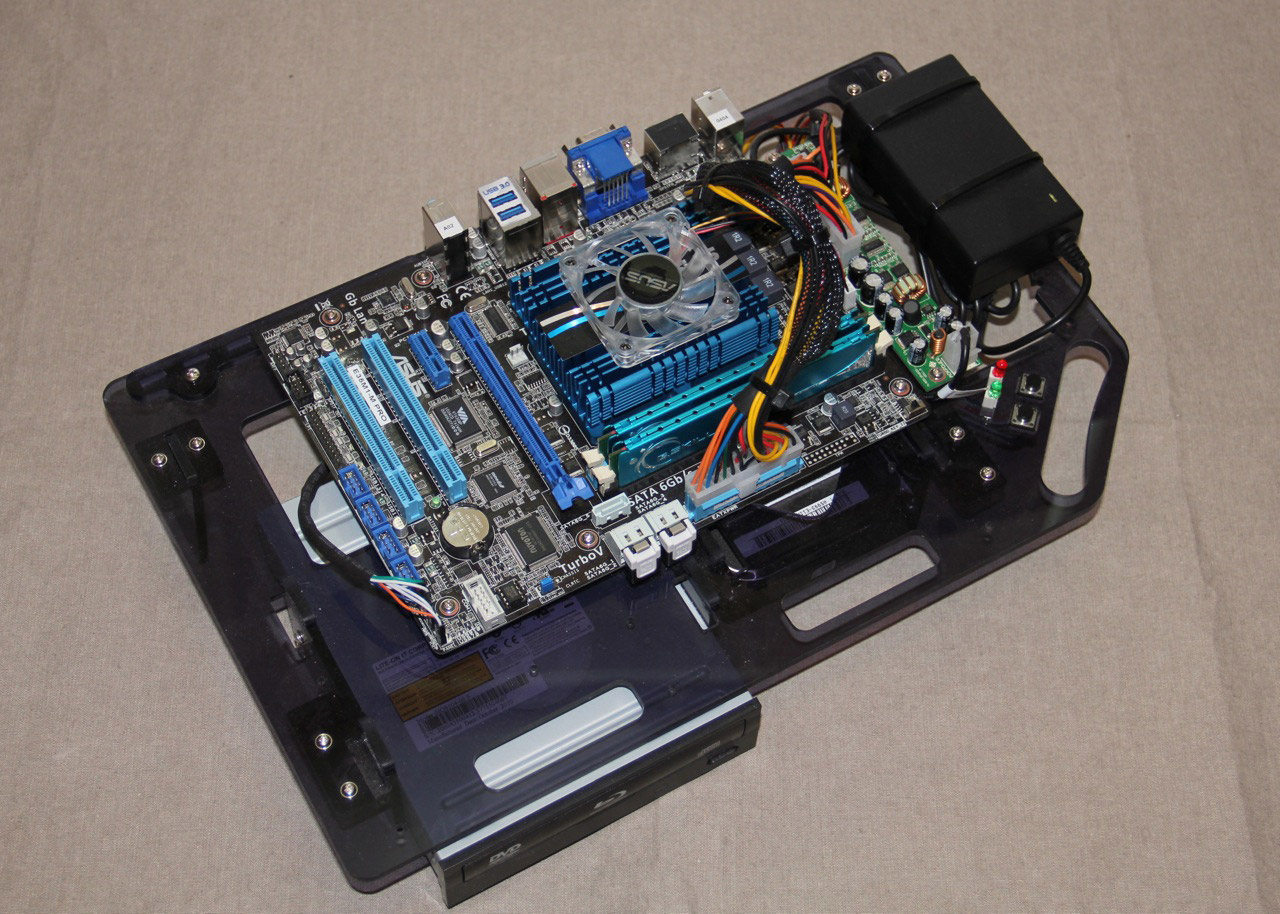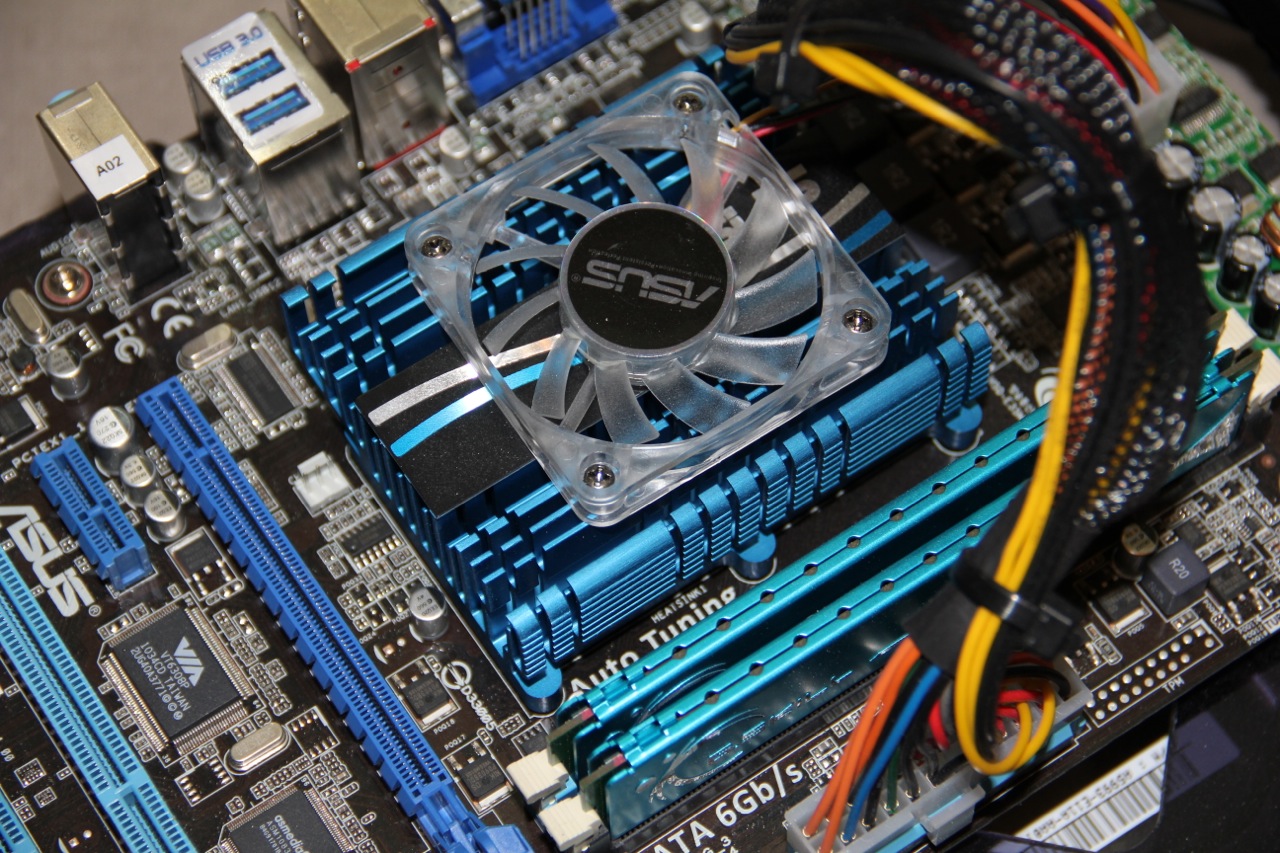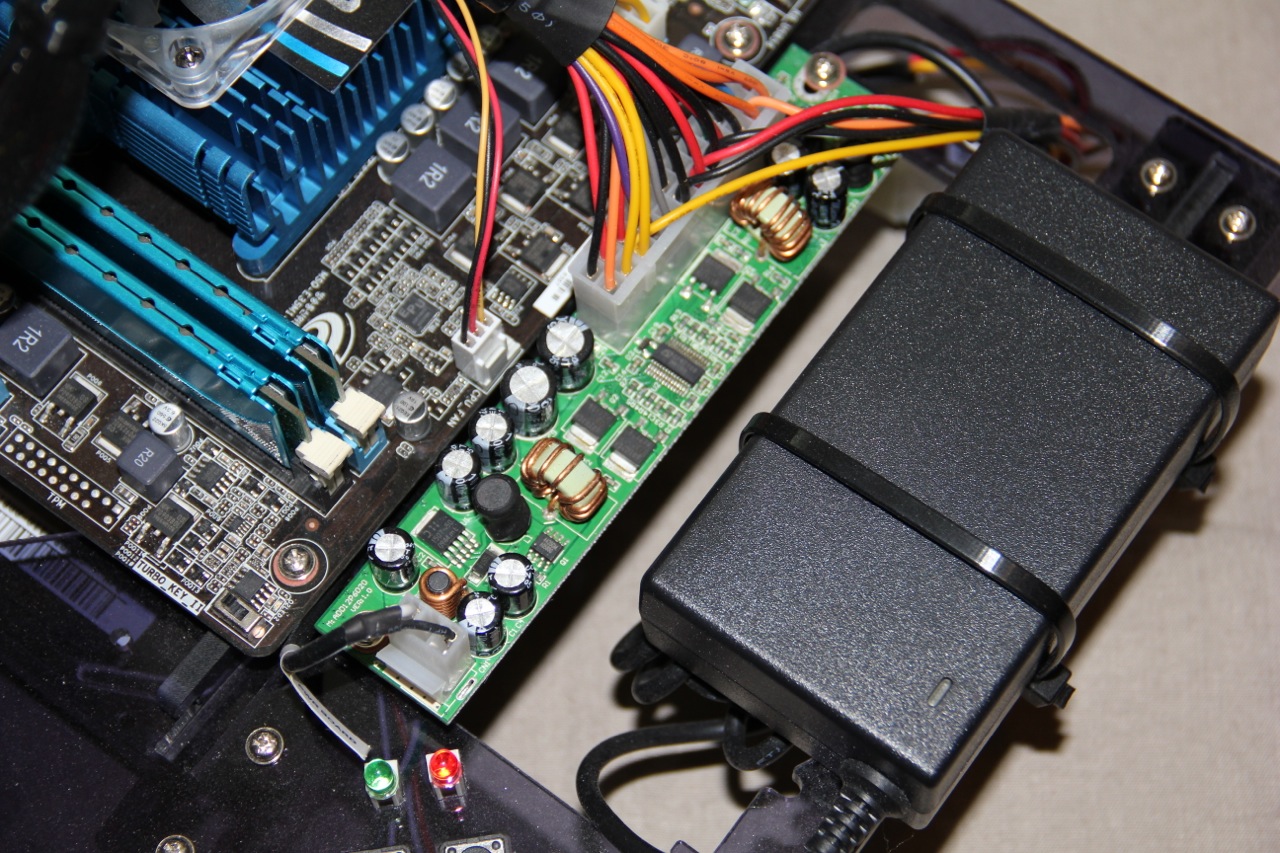AMD Fusion E-350 APU Platform Review - Setup & Testing
My testing platform was an ASUS E35M1-M Pro. The motherboard comes with the AMD Fusion E-350 soldered onboard, and the heatsink affixed. There is an optional fan included, though it can be left off for a truly silent platform. The chipset offers USB 3.0, SATA 6Gb/s, Gigabit LAN and HDMI out, along with an UEFI BIOS. The APU is BIOS configurable for the amount of system RAM you can allocate to the GPU. The options available are 384MB, 512MB and 1GB. For my testing I set the system to allocate 1GB for the GPU.
I had 4GB of RAM total installed, so that left 3GB for Win7. For power I used a HTPC "brick" style AC adapter, like those used in notebooks. Considering the APU only pulls 18W of power, the 85W AC adapter was more than enough. For storage I used a single Samsung Spinpoint, and mounted it all on a DOMA Pro open air case from MyOpenPC.



AMD has been touting the gaming prowess of the Fusion series, continually calling out that the chips have a "discrete-level" DX11 GPU. However, we have to temper our expectations considering the initial target platforms: ultra-portables, netbooks and all-in-ones.
By way of comparison, let's look at the HP Pavilion dm1z and the AMD Radeon HD 6970. The dm1z weighs in at 11.4" x 8.4" x 0.8" - 1.2", and 3.52 pounds. Assuming that the taper on the height is steady (with an average height of 1"), the total package clocks in at 95.76 cubic inches and 3 1/2 pounds and a starting price of $400.
A Radeon HD 6970 comes in at 11.0" x 3.75" x 1.5" and 2.35 pounds. The math works out to 61.88 cubic inches, and the average price is $350. This may seems like a odd comparison, but I make it for this reason - the AMD Fusion E-350 is not going to be a gaming powerhouse. AMD's high-end single GPU card is 2/3 the size, 2/3 the weight and 80% the price of the complete 11.6" notebook from HP.

So, we're going to have to temper our expectations, the question is by how much...
I tempered my expectations enough to decide against our normal test suite of beefy DX11 titles. I figured I would start with some titles that I new performed well with low-end discrete titles from my Radeon HD 5000 series testing. I decided to start low on the settings, and see how performance was impacted as I notched the settings up.
Additionally, I decided to pick up some newer "indie" titles that I expected would fall within the definition of a mainstream gamer, and would play well with the idea of gaming on an ultra-portable.
I tested at four resolutions: 1280x720, 1360x768, 1600x900 and 1920x1080. I chose 1360x768 because it is very close to the native resolution of the HP dm1z (1366x768). I also chose 1280x720 for this same reason. Many smaller notebooks for which the E-350 would provide power, would have a native resolution of approximately 720p HD.
I felt it best to test at the resolution that actually matched the intended platform for the E-350 APU. There wasn't a need to try and torture test this product, like we do with out discrete GPU testing. Additionally, I did test the E-350 at 1600x900 and 1920x1080. I did this for two reasons.
First, I wanted to provide some semblance of comparison to our discrete GPU testing, which is done at 1600x900 and 1920x1080 for single screens. And secondly, I wanted to provide a benchmark of what the user's gaming experience would be if they traveled with something like the dm1z and hooked it up to an HDTV through the HDMI port on the notebook.